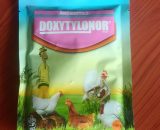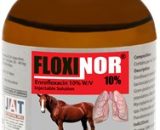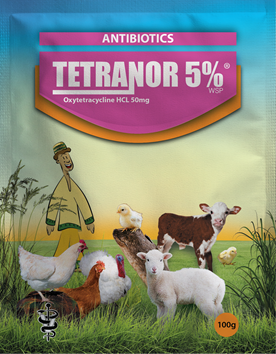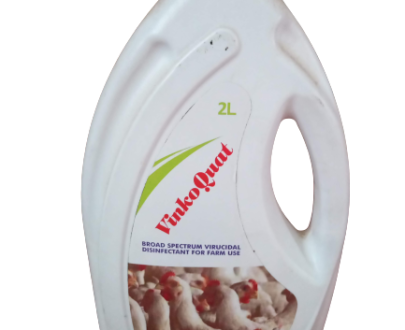Tetranor, though not the drug itself, is a brand name commonly associated with a specific antibiotic: oxytetracycline. This article delves into the details of Tetranor, exploring its properties, applications in veterinary medicine, and crucial considerations for usage.
What is Tetranor?
Tetranor refers to a line of veterinary medications containing oxytetracycline hydrochloride, a broad-spectrum antibiotic. “Broad-spectrum” signifies its effectiveness against a wide range of bacteria, both Gram-positive and Gram-negative. These categories differentiate bacteria based on their cell wall structure, and Tetranor can combat infections caused by either type.
Properties
- Mode of Action: Oxytetracycline works by inhibiting protein synthesis in bacteria. This essentially cripples the bacteria’s ability to grow and reproduce, hindering the spread of infection.
- Absorption: Oxytetracycline, when administered orally, is readily absorbed into the animal’s digestive tract, allowing it to reach the bloodstream and target the infection.
- Long-Acting Options: Certain Tetranor formulations are long-acting, meaning they release the antibiotic slowly over a sustained period. This reduces the frequency of administration compared to short-acting antibiotics.
Applications of Tetranor (Oxytetracycline) in Veterinary Medicine
Tetranor is a valuable tool for veterinarians treating various bacterial infections in animals like:
- Respiratory Tract Infections: Pneumonia, bronchopneumonia (combined lung and bronchial infection) can be effectively treated with Tetranor.
- Urinary Tract Infections: Bacterial infections affecting the bladder and urinary tract can be addressed with Tetranor.
- Gastrointestinal Infections: Diarrhea, dysentery, and other infections affecting the digestive system can be managed using Tetranor.
- Other Applications: Tetranor is also used for foot rot, mastitis (inflammation of the mammary gland), and infections caused by specific organisms like Mycoplasma and Chlamydia.
Available Forms of Tetranor
Tetranor comes in various formulations to suit different treatment needs:
- Oral Solution: This liquid form is often used for poultry and calves, allowing for easy administration in drinking water or directly into the mouth.
- Injection: Injectable Tetranor is a long-acting option preferred for treating larger animals or when a sustained release of the antibiotic is required.
Important Considerations for Using Tetranor
While Tetranor is a potent antibiotic, responsible use is crucial to ensure its effectiveness and minimize potential side effects. Here are some key points to remember:
- Veterinarian Prescription: Tetranor is a prescription medication, and using it without veterinary guidance can be dangerous. A veterinarian can assess the animal’s condition, determine the appropriate dosage and duration of treatment, and ensure Tetranor is the most suitable medication for the specific infection.
- Dosage and Duration: Following the veterinarian’s prescribed dosage and treatment duration is critical. Underdosing can lead to antibiotic resistance, where bacteria develop mechanisms to evade the antibiotic’s effects. Conversely, overdosing can cause adverse reactions in the animal.
- Potential Side Effects: Common side effects of Tetranor include vomiting, diarrhea, and loss of appetite. In rare cases, more serious reactions can occur. If you notice any concerning signs, consult your veterinarian immediately.
- Drug Interactions: Tetranor can interact with other medications. Inform your veterinarian about any other medications the animal is taking to avoid potential complications.
- Withdrawal Period: Meat, milk, and eggs from treated animals may contain antibiotic residues. Adhere to the recommended withdrawal period before consuming these products to safeguard human health.
Conclusion
Tetranor, when used correctly under veterinary supervision, is a valuable tool for treating bacterial infections in animals. Its broad-spectrum activity and various formulations make it a versatile option for veterinarians. However, responsible use and adherence to veterinary guidance are crucial to maximize its effectiveness and minimize potential risks.










Customer reviews
Reviews
There are no reviews yet.
Only logged in customers who have purchased this product may leave a review.